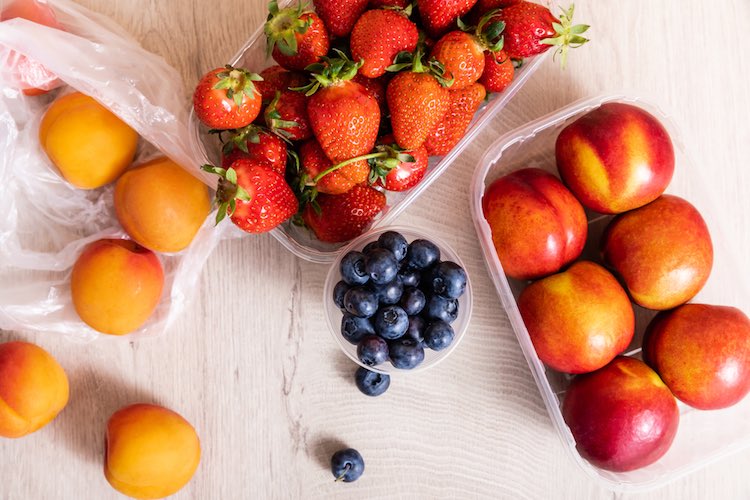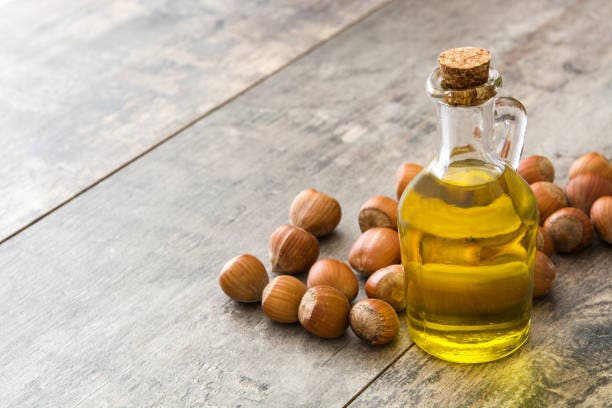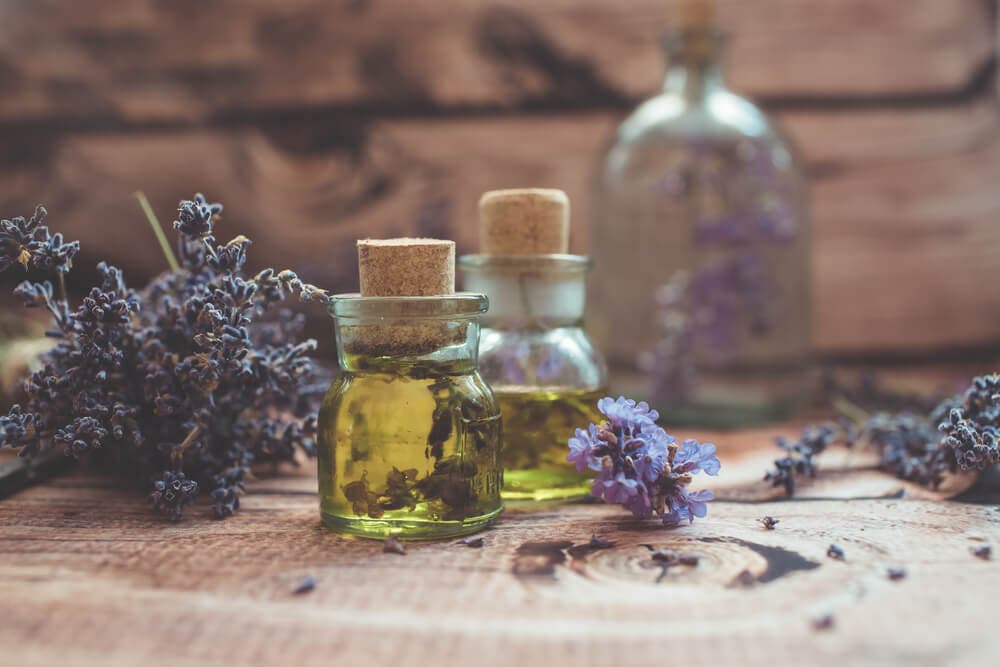As summer progresses, the harvest of fresh vegetables and fruits expands to include more varieties. During July and August, the seasonal menu is at its richest. This is especially true for fruit. Apples and pears begin to ripen, but also peaches, plums, blackberries and others.
Seasonal and local food in July
Repetition is the mother of wisdom, they say. The principles of seasonal and local diets could be summed up in one sentence – “Eat mainly fruits and vegetables that are currently growing in the garden, field, forest, meadow or trees.”
In the seventh part of this series, we will look at a detailed list of fruits, vegetables and herbs that are harvested, picked or picked in July. In the second month of summer, new species are added almost every day. It is also the time when fresh fruit and vegetables are not only eaten, but also preserved, pickled, dried or frozen to become a source of vitamins and minerals in the coming winter.
In July, they are still harvested strawberries, the season of sweet strawberries is at its peak cherries, is being picked gooseberry and the harvest is slowly approaching blueberries, blackberries, raspberries, currants, but also the first peaches, pears, apples, apricots, nectarines or plums. The fruit trees are literally covered with fruits that are crying out to be picked.
Summer is a paradise of juicy fruit, but there is no shortage of vegetables either. This is true for almost all the species that are common in our country: potatoes, onions, zucchini, broccoli, peas, peas, cabbage, cauliflower, kohlrabi, leek, cucumber, beetroot, carrots, tomatoes, spinach, lettuce, rhubarb and more. New species are harvested celery, garlic, hot peppers, peppers, eggplant and cabbage.
Fresh fruit in July
Harvesting continues strawberries, cherries and sour cherries, ripening gooseberry, blueberries, blackberries, raspberries, currants, peaches, pears, apples, apricots, nectarines and the harvest is slowly approaching plums.
Cherries
July is the peak season for cherries. The fruit must be picked when ripe, as they do not ripen and spoil quickly once picked. Therefore, they must be eaten immediately, or they can be made into homemade compotes, juices and jams.
Both cherries and sour cherries are excellent sources of iron, potassium, calcium, magnesium, vitamins A, C, E, B1, B2, B3, B6, folic acid, phenols and flavonoids, which are known for their antioxidant properties.
Gooseberry
The green oval fruits have a pleasantly sweet and sour taste. It is eaten fresh, added to cakes and buns, as a decorative element on sweet desserts. It is used to make jam or compote. It can also be frozen. It is an excellent source of vitamins A, C and E, potassium, calcium and magnesium. Its sour taste is due to its fruit acids: malic and citric acid.
Blueberries
The most popular summer fruit is known for its tremendous amount of minerals and vitamins, especially calcium, potassium and iron, B vitamins and vitamins A, C and E. It also contains fiber, polyphenols and tannins, which help with diarrhea and may be responsible for its slightly sour taste. The flavour and aroma of wild blueberries is more pronounced than that of cultivated garden blueberries.
In the kitchen, blueberries are added to fruit salads, eaten with yoghurt or cottage cheese and are great as an ingredient in fruit pies, cakes and muffins. They make delicious jams and compotes.
Blackberries
It is a very low-calorie fruit. 100 g of blackberries contain only 44 kcal and are rich in vitamins A, B, C and E. Of the minerals, they contain potassium, magnesium and calcium. They also contain flavonoids with many health benefits, such as heart health, helping to regulate blood pressure and boosting the immune system.
They are eaten raw on their own, mixed into fruit salads and dairy products, pies, cakes and desserts, similar to blueberries. They are generally very well combined with other berries. They are, of course, also suitable for jams, chutneys, compotes, etc.
Raspberries
They have a mild sweet taste that makes them adored by adults and children alike. The sugar content is very low and it is a low-calorie fruit. About 85 % of the weight of raspberries is water. They contain fibre, B vitamins and vitamin C. Of the minerals, they are a good source of potassium, calcium, magnesium, manganese and iron. They contain flavonoids.
Raspberries are often used by housewives to make desserts, pies, cakes, ice creams, and the like. However, they taste great in combination with vegetables, for example arugula, or meat dishes. Raspberries are used to make vinegar, which smells lovely. Of course, raspberries can be preserved and made into homemade jam or juice, not only for the winter.

Currants
The small berries are characterised by their characteristic juiciness, sweet and sour taste and intense colouring. Black and dark red currants are the most common, but there are also white and yellow varieties.
It contains a minimum of calories and many beneficial substances, especially vitamin C, iron, potassium, calcium, flavonoids and a soluble type of fiber pectin, which helps to reduce harmful cholesterol levels.
Currants are eaten raw, in fruit salads, desserts, pies, cakes or in combination with dairy products. It is also processed into jams, jellies, chutneys, juices and the like. Its sweet and sour taste makes it suitable for certain cheeses and game.
Apricots
Fresh fruits from local growers tend to be available for a short period of time and are therefore considered symbolic of the peak of summer.
Ripe apricots taste sweet, yet are low in calories (43 kcal per 100 g serving) and sugar (8.5 g per 100 g), but high in vitamins and minerals. They are rich in vitamin A, B, C, folic acid (B9), magnesium, potassium, calcium, iron, phenolic acids and carotenoids, which are the reason for their deep orange colour.
Apricots are used to make pies, cakes, desserts, compotes, jams and juices. Stuffed dumplings with apricots and crumble cake are a staple of cuisine. Dried apricots are also popular.
Peaches
They are juicy, fresh and sweet at the same time. They are also perishable and should therefore be eaten as soon as possible or processed in another way. Peaches are added to desserts, pies, salads and ice creams. They are made into jams, compotes and juices.
They are high in water, low in sugar and low in calories. They contain vitamin C and B vitamins. Of the minerals, magnesium, iron, calcium and potassium. It is advisable to wash peaches thoroughly before eating them, as dirt and bacteria are more easily deposited on their fuzzy skin.
Nectarines
They belong to the same group as peaches. They look and taste similar. Unlike peaches, however, they have smooth skin without fine fuzz. They also tend to be smaller and less sweet.
Again, they are a very good source of vitamins A and C, calcium, sodium, potassium and phosphorus. They are also rich in fibre, which is important for normal bowel and digestive tract function.
Like previous fruits, nectarines are used in fruit salads, ice creams, combined with dairy products, or preserved and added to cakes and sweet desserts. For example, in pancakes.
Fresh vegetables in July
Of the summer vegetables, today we will describe in more detail rhubarb, spinach, celery, garlic, hot peppers, eggplant, sweet and hot peppers, field greens and cabbage.
Sweet peppers
The range of pepper varieties is very varied. The different varieties differ in colour and taste. Some varieties are sweet, others hot. Peppers are eaten cold and cooked. In summer they are grilled and made into salads or served as a side dish with meat. Sweet peppers are particularly rich in vitamins C, A and E, as well as carotenoids.
Hot peppers
These are hot peppers, goat or ram’s horns and chili peppers. They are sold fresh or powdered as a spice and their taste can be mild to very hot. The degree of hotness is indicated in Scoville units (SCU).
Hot peppers are smaller than sweet peppers and vary in shape from round to pointed. The colour range is also varied, from green to yellow, orange and red to black. They contain vitamin C, E, carotenoids and their pungent taste is due to a substance capsaicin.
In the kitchen they are used in raw and dried form, with the dried ones being less spicy. Chilli peppers include cayenne pepper, which is also found in the popular Tabasco sauce.
Spinach
It may not be the best source of iron, as Popeye the Sailor thought, but it still contains plenty of other nutrients. Plus, it is a tasty vegetable. Spinach must be eaten quickly as it spoils, or it is recommended to freeze it.
It contains B vitamins, vitamin C, potassium, magnesium, iron and calcium. Fresh spinach contains almost 90% water and is a low-calorie food.
The young leaves are eaten raw, otherwise spinach is cooked. The classic is steamed spinach with eggs and garlic, it is also good with meat and fish and is great in various wraps. Popular dishes include spinach lasagne or savoury pie with spinach filling.
Celery
Celeriac is a related vegetable to celeriac. It is crunchy and is therefore used as a a healthy alternative to potato chips combined with white yoghurt dip or cottage cheese. It can be eaten raw or cooked. It is added to smoothies, vegetable and fruit juices, soups, stews and sauces.
It is a low-calorie vegetable particularly rich in vitamin A and B vitamins. Of the minerals, it contains calcium, potassium, magnesium. Its typical aroma is caused by essential oils.
Rhubarb
This vegetable, which is often mistaken for a fruit, is popular for its interesting sweet and sour taste.
The fleshy turnips are eaten growing close to the ground. Rhubarb is not eaten raw but cooked. It is most often used in baking cakes and desserts. Less common, but very tasty, are rhubarb jams and compotes. Rhubarb syrup is also delicious.
Its typical taste is due to malic and citric acid. It is very rich in vitamins C and K and minerals, especially calcium and potassium. In terms of calories, it is also suitable for diets.
Caution: Contains oxalic acid, which in excessive amounts can adversely affect calcium absorption and lead to kidney stones and digestive problems.

Garlic
This is a very nutritionally rich vegetable, but it has two less desirable characteristics: a very distinctive taste and smell. These are due to the high content of essential oils and in particular the anti-bacterial and anti-mould substance allicin, which can help lower cholesterol levels and positively affect blood clotting.
In addition to being shrouded in many legends (e.g. its effect against vampires), it also carries a reputation as a natural remedy. It contains a large number of vitamins (B, C and K) and minerals (again potassium, magnesium and calcium).
In the kitchen it is used to flavour dishes, added to salads, soups, meat and vegetarian dishes or salads. Its taste stands out, for example, in combination with cucumber salad (tzatziki and white yoghurt) or with steamed spinach.
Aubergines
The aubergine is characterised by its striking colour and subtle flavour. It contains a minimum of calories, but also fewer nutrients. Most of the nutrients are found in the skin and just underneath it, which is why it does not peel.
Because of its alkaloid content, which can cause nausea, it is never eaten raw. Wash and drizzle with lemon juice before preparation to prevent discoloration. Salt will draw out the bitter taste.
Aubergines are boiled, stewed, baked or now in summer grilled. Because of the less pronounced flavor, use bold spices. The French add it to ratatouille and the Greeks to traditional moussaka.
Polnicek
The tiny leaves of the spearmint have a fresh green colour and a very mild taste, which is due to the essential oils. It is not bitter like other leafy vegetables. It contains a lot of Iron, vitamin A and C and folic acid (B9).
It is added to salad mixes, goes well with roasted and grilled meats, fresh cheeses, and stands out in warm potato salad. As it can withstand very low temperatures, it is also served during the winter.
Sauerkraut
Although cabbage is harvested during the summer, its main season comes in the winter in the form of sauerkraut, which is a very valuable source of vitamins and minerals. It is served as a salad on its own or as a side dish.
Fresh sauerkraut contains very few calories, plenty of fibre, lots of vitamin C, E, B vitamins, especially folic acid and, of the minerals, calcium and magnesium. The typical taste of cabbage is due to glucosinolates, which have a number of positive effects on health (strengthening the immune system and neutralizing free radicals).
In addition to the preparation of sauerkraut, cabbage is eaten raw or boiled, stewed and baked. It is added to soups and stews or used to make vegetable salads.
The best herbs growing in July
Sunny and abundantly vegetated meadows in July are rich in a variety of health-giving herbs. Their flowers, leaves, shoots and other parts can be used in cooking, aromatherapy, natural healing or skin and hair care.
Chicory
The flowers are harvested and must be dried quickly so that they do not turn white. Decoctions are prepared from them, which are used for eye washes and acts against conjunctivitis.
Yarrow
An amazing female herb thathelps adjust menstrual cycle, relieves pain during menstruation and also preventive action against cysts and fibroids. The herb is used both fresh and dried.
Medical lavender
Lavender is popular not only for its pleasant scent, but also for its ability to repel insects and especially mosquitoes and moths. It has disinfectant effects, promotes wound healing and is considered a natural antidepressant. It is used on promote digestion, for deeper sleep, relieve anxiety and restlessness, and improve mood.
Peppermint
Peppermint is easily recognized by its distinctive minty taste and smell. The leaves are used as an ingredient in summer drinks and medicinal tea and mint drops are prepared. It works for upset stomachs, heartburn, gallbladder problems and other digestive disorders. It has a soothing effect and relieves cramps.
Caution: Mint is not suitable for young children or in large quantities for pregnant and lactating women as it may reduce breast milk production.
Lemon balm
A beautiful herb that smells of citrus, which also has calming effects, blooms in July. It soothes agitated nerves and is therefore often used for difficulty falling asleep and sleeping in general. Lemon balm is made into a tea or the dried leaves are added to herbal pillows. It is a component of herbal mixtures intended for calming and sleep.
OUR TIP: Lemon balm likes drier and sunny habitats, and can be grown quite easily in the garden or at home in a pot.

Tips for recipes with summer fruits and vegetables
Final summary: The season of abundance continues in July
- July is considered the peak of summer. A huge amount of seasonal vegetables and especially fruit ripen.
- It is now that the varieties that are eaten fresh are ripening, but they are also further processed into jams, marmalades, compotes, juices and other products that are mainly consumed in winter.
Enjoy the wonderful season of plenty, because it will pass like water.
Read also:
- How do I check my gastrointestinal function?Stomach pain, constipation or diarrhea, bloating, belching, heartburn? These are all symptoms of problems in the gastrointestinal tract. It starts with the mouth and esophagus and ends with the intestines and rectum.
- What are the benefits of hazelnut oil for the skin?Hazelnut oil is rich in vitamins and essential fatty acids that nourish the skin. Here are a few reasons why you should add this oil to your skin care routine.
- Immune-boosting aromatic oilsThere are many products and treatments that can help your body to build a natural resistance to the harsh winter months, and aromatherapy is one of them. There are many studies supporting the healing power of aromatherapy and it is good for both mental and physical health. Aromatic essential oils also have many health benefits… Read more: Immune-boosting aromatic oils
- Marula Oil Benefits, Uses, and PrecautionsMarula Oil is an exotic oil that comes from the African Marula tree. It’s a good ingredient for skin, hair, and nails. Learn more about the benefits and precautions of Marula Oil with our guide.
- Goal setting for students, children and young peopleRemember when you learned how to set goals? If you have trouble answering this question, you are not alone! Most of us don’t spend much time thinking about how we set our goals. In fact, many of us don’t even think of goal setting as a skill; rather, it’s something we do without much thought.… Read more: Goal setting for students, children and young people
The articles on this site are for information purposes only. The site administrators are not responsible for attempting to apply any recipe, advice or diet, nor do they guarantee that the information provided will help or harm you personally. Be cautious and always consult a doctor or nutritionist!
*All products recommended are selected by our editorial team. Some of our articles include affiliate links. If you buy something through one of these links, you help us earn a small commission from the seller and thus support the writing of useful and quality articles.










